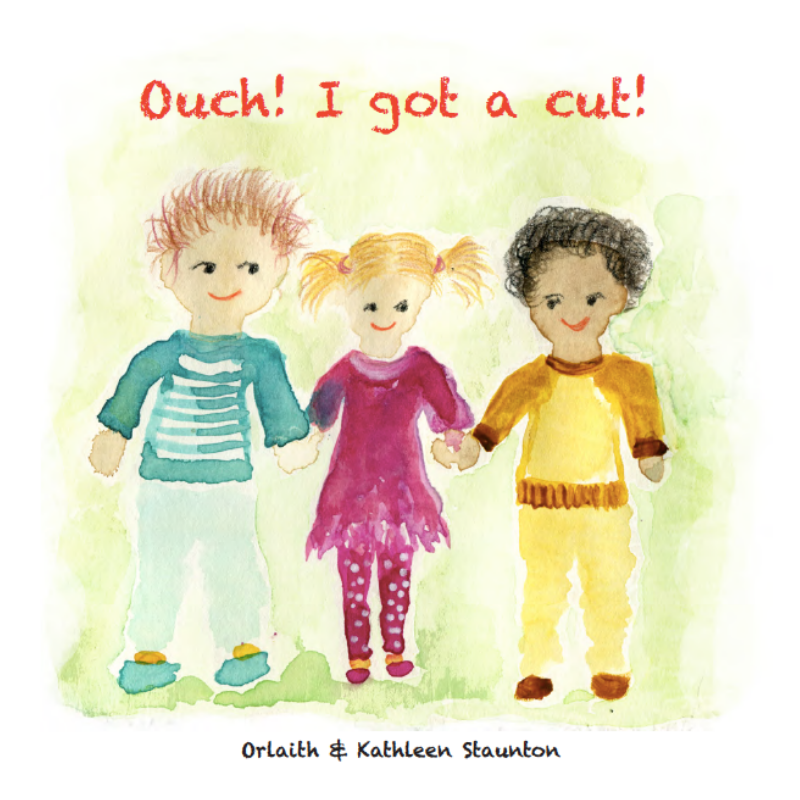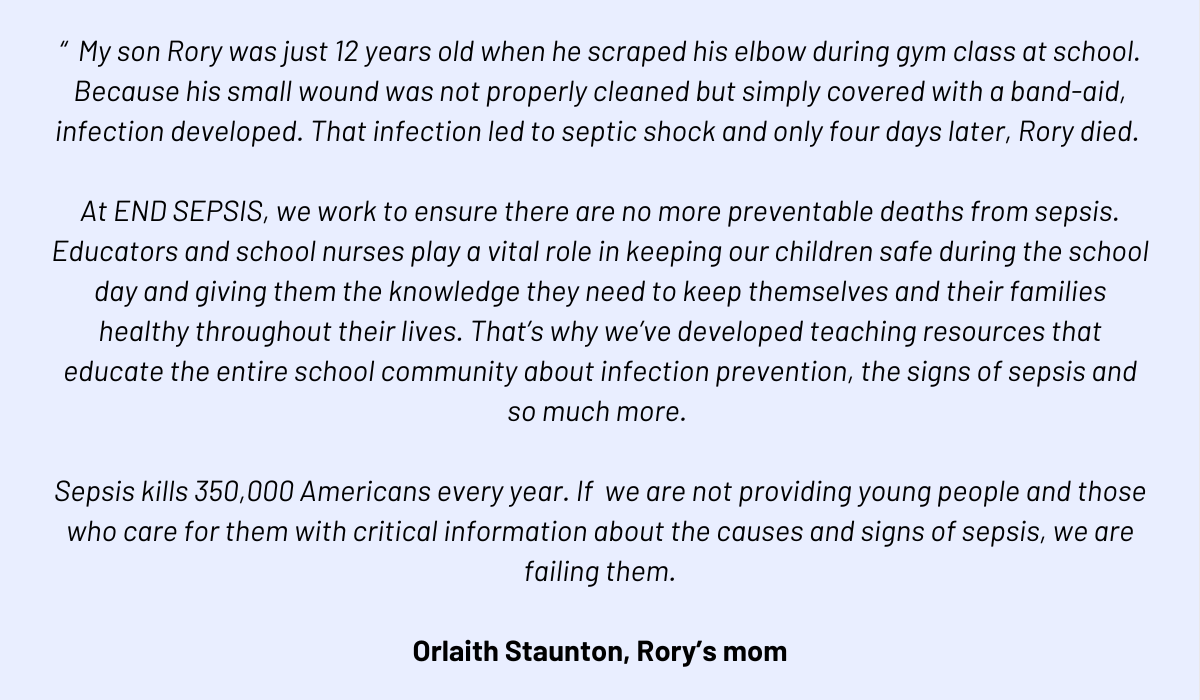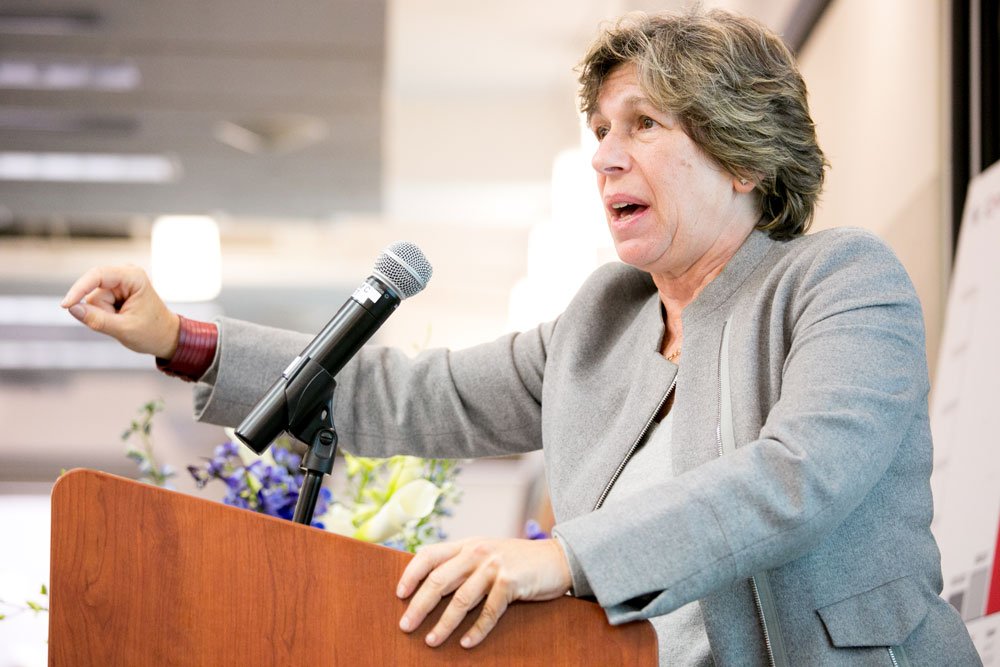
Sepsis Education for Schools.
Educating young people, their teachers and their families about sepsis is one of the most effective things we can do to reduce sepsis deaths and disabilities. Read more about our Sepsis in Schools program and how you can help increase awareness and save lives.
Sepsis is the leading cause of death for infants and children worldwide. 75,000 children in the United States are hospitalized with sepsis and approximately 7,000 children will die every year. In addition, 38% of children who survive sepsis sustain lifelong disabilities.
In collaboration with experts in educational curricula and public health, we have developed instructional tools and materials for students and school staff.
Your Opportunity to Act!
Ask your school to adopt our Sepsis for Schools toolkit! It only takes a moment to make the request. Just follow the steps below!
- Download our letter to principals encouraging them to utilize our sepsis toolkit in their school.

- Call or email your local school to request your principal’s email address.
- Email our letter as an attachment. The letter template includes space for you to add the principal’s name and any personal statement you’d like to make about your experience with, or concerns about, sepsis. It also links to our Sepsis in Children poster for school nurses.
- Join Sepsis Families United, our grassroots advocacy organization- and receive action alerts and updates. Sign up HERE.
Our Sepsis for Schools toolkit includes:
- A comprehensive K-12 teaching curriculum on infection and sepsis (see more information below)
- A signs of sepsis poster for display in school nurses’ offices
- Ouch! I Got a Cut!, a picture book for young readers, available as as a free ebook Download the eBook
- Sepsis: What You Need to Know to Save a Life, an animated video that explains sepsis and its signs in under two minutes, suitable for adults and older children.
Download our letter to school principals
The Curriculum.
 We believe that the responsibility for ending sepsis and spreading information on infection belongs to all of us–and that young people have an especially critical role to play. End Sepsis has developed the first comprehensive K-12 sepsis curriculum to progressively educate school students about infection and sepsis and to equip them to become effective advocates in their communities. Our goal is to reduce instances of infection and ensure that every young person knows the signs of sepsis. Our sepsis curriculum is the result of a collaboration between the American Federation of Teachers, the New York State Department of Health and other education and public health experts.
We believe that the responsibility for ending sepsis and spreading information on infection belongs to all of us–and that young people have an especially critical role to play. End Sepsis has developed the first comprehensive K-12 sepsis curriculum to progressively educate school students about infection and sepsis and to equip them to become effective advocates in their communities. Our goal is to reduce instances of infection and ensure that every young person knows the signs of sepsis. Our sepsis curriculum is the result of a collaboration between the American Federation of Teachers, the New York State Department of Health and other education and public health experts.
The curriculum meets key Common Core Standards in addition to New York State Health Education Standards.
Curriculum outline.
- Grades Pre K-2 includes:
- How to care for small wounds and the importance of basic first aid and good hygiene practices
- How germs can make us sick and infections can occur
- How we can control the spread of infection
- Grades 3-5 includes:
- Introduction to the subject of sepsis
- Reinforcement of appropriate first aid and hygiene practices
- How infections spread
- (Grades 6-8)
- Identifying a public health emergency and
- The signs of sepsis
- Sepsis prevention strategies and educating others about sepsis
- (Grades 9-12)
- In depth information on the topic and science of sepsis
- How to educate others about the dangers of sepsis and become an advocate for effective public health solutions
Download the curriculum
View our video about Sepsis in Schools.
Successes.
In 2017, New York State passed Rory Staunton’s Law, requiring that all New York school students have access to comprehensive sepsis education. End Sepsis, educator Ann Smith and the American Federation of Teachers (AFT) developed the lesson plans, and the AFT has made the curriculum available on the Share My Lesson platform, an award-winning online community where nearly 1.7 million educators can access education modules and share their greatest teaching resources.





